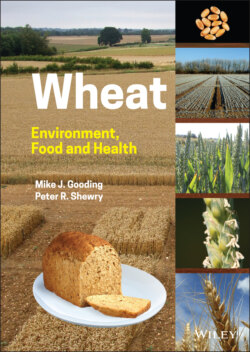Читать книгу Wheat - Peter R. Shewry - Страница 30
1.3.5 Increases in Harvest Index
ОглавлениеIn addition to the characteristics of the classic domestication syndrome, modern cultivated wheats now differ in many ways from their wild progenitors. The increase in harvest index for grain has been of great significance, i.e. the increase in the ratio of the grain mass to the total crop biomass (but often neglecting the roots and fallen leaves) (Donald 1962). Austin et al. (1982) reported harvest indices of only 0.15, 0.05, and 0.16 for T. uratu, Ae. speltoides, and T. tauschii, respectively, while the harvest index of tetraploid wild emmer was a little higher at 0.28. Even at this level, however, it would be necessary to produce more than 3.5 t of crop biomass to yield each tonne of grain. Although farmers have long recognized that shorter wheats have higher harvest indices (Roberts 1847; Garnett 1883), cultivars released before 1900 still had indices below 0.35 (Austin et al. 1989). During the twentieth century, significant increases in harvest index were achieved, particularly through breeding programmes that incorporated dwarfing alleles from Japanese wheats, reducing crop heights by 10–20% (Borojevic and Borojevic 2005). By the mid‐1980s, the harvest index of UK wheats approached 0.55 (Austin et al. 1989), i.e. at harvest most of the crop biomass in the field was present in the grain. This progression was seen in wheats throughout the world and across ploidy levels (Evans 1993). The considerable implications of the adoption of high harvest index, shorter wheats on wheat agronomy, quality, and sustainability are covered in Chapter 6.
